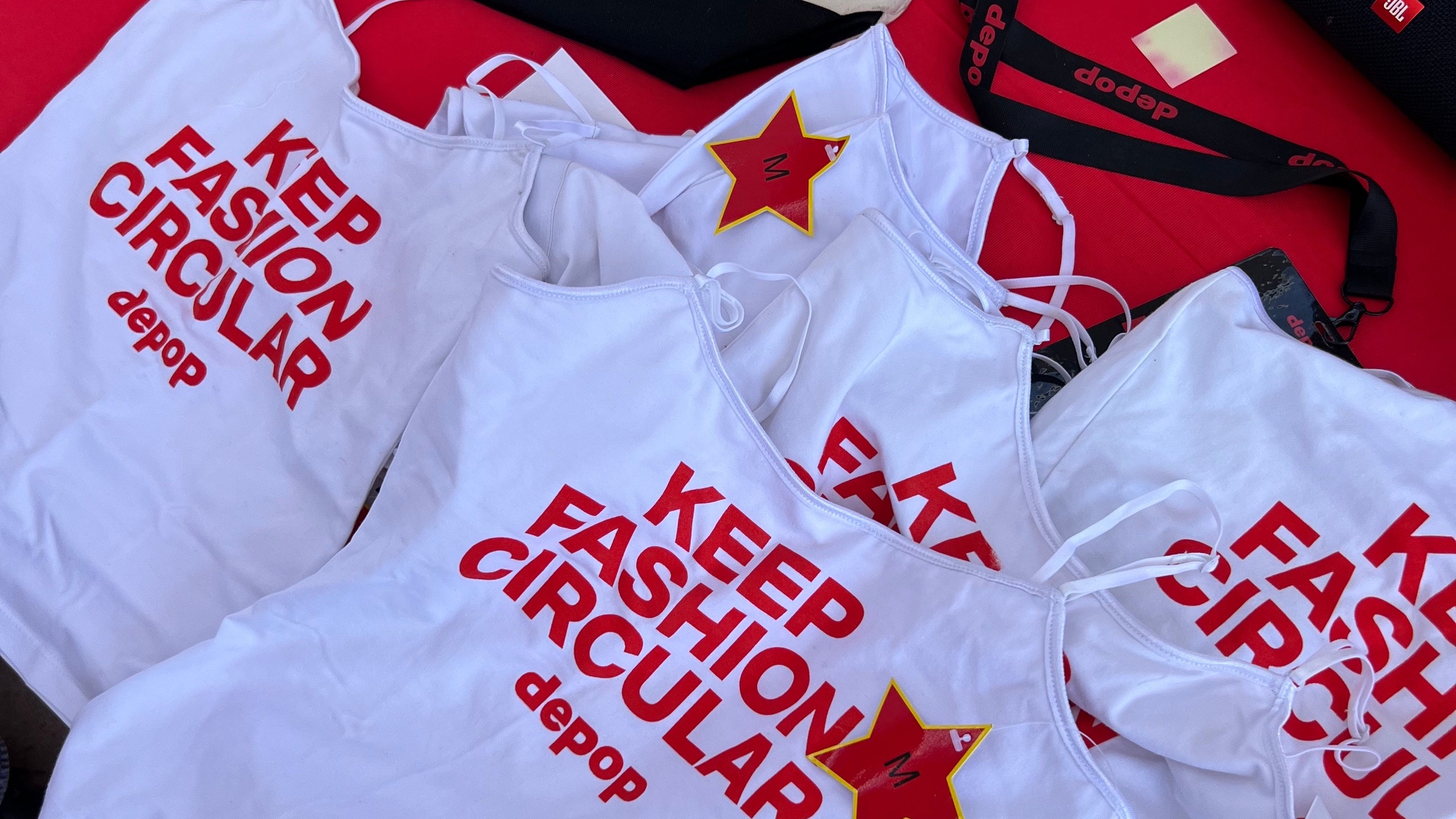“People don’t want to admit if they’re wearing Shein, they’ll pretend it’s vintage,” Sanjana Pitti tells me. We’re standing in the middle of the main campus at Arizona State University (ASU) on a 112-degree afternoon. The unseasonably (and unreasonably) hot day is the perfect setting for what I’m here to learn about. Pitti is a recent graduate who used to run the school’s Student Fashion Collective – a club that organizes fashion events on campus. Now, she works for the clothing resale app Depop, where she is the Student Community Manager and she manages students from the brand’s ambassador program, which is present across dozens of campuses in the United States. The students not only encourage their classmates to buy and sell on the app, but they also educate them on why they can and should opt out of brands like Shein altogether.
At ASU, a weekly vintage market called the University Street Market sees a slew of vintage vendors selling one-of-a-kind clothing, shoes, and accessories for around $10-$20. In many ways, it’s even cheaper and easier to shop there than many from the fashion brands. Despite the temperatures — a symptom of global warming, which fashion plays a role in exasperating — students line up shopping and trying on '90s denim and vintage band tees. Later that evening, a campus-wide student-organized clothing swap takes place, where attendees bring clothes to exchange with one another. It’s both a free shopping experience and a full-blown party.
Austin Nguyen, a third-year student at Arizona State University studying supply chain management, is a Depop ambassador. “I know [fast fashion] is very big for college students, but I don't really like fast fashion,” Wynn says. “It's a huge waste on the planet, and it's killing our ecosystem.” Fast fashion is exactly as it sounds: clothing that is produced and sold at alarmingly fast rates. It’s made at high volumes, with often exploitative working conditions in the factories, and the result is trendy styles at prices that fit the college student budget. It’s no wonder that these brands have become a mainstay across the United States, despite young people’s propensity toward sustainability – people ages 18-24 still make up a large percentage of fast fashion shoppers.
This idea isn’t unique to ASU; students on campuses around the country organize regular vintage markets and clothing swaps. It’s why Depop decided college campuses were a great way to get the message out about the benefits of secondhand clothing.
During the clothing swap, I spoke with several students who had just swapped half their wardrobe with friends. “It kind of creates a connection and a little community over here. We're all interacting, meeting new friends, and swapping clothes,” Emma says. She’s wearing wide-leg jean shorts and a cropped white top, both vintage. “It's all free, which is nice to get new pieces that you'll wear more [at no cost].”
Her friend Carly, also wearing vintage (a floral dress over jeans), joins in: “I'm giving someone else my clothes instead of just completely disposing of them. I think for me, that's really important. Plus, it builds so much community. I got so many people's Instagrams today just kind of meeting with them and being like, ‘Oh hey, I really like your style.’ And kind of just meeting people with similar mindsets about fashion.”
For Depop’s part, that sense of community around thrifting is what they say differentiates them from their competitors. At Stanford where we ended up a few days later, students, clad in vintage dresses and Veja sneakers, filled a classroom to listen to the Depop marketing team members' vision for the future of the app and how they got started.
“When I tried selling for the first time, which opened up a whole new world, I was able to help myself fund my way through university,” Oskar Platts-Palmer, the Senior Marketing Manager for Depop told the group. “I was feeling a little bit lost and when I started selling with Depop, I gained new skills like marketing. I was having trends, I was learning kind of how to deal with customers.”
Holly Pound, who engineered the student ambassador program, highlighted the importance of community, even noting that two sellers met on the platform and recently got engaged.
And maybe that’s what makes sustainable fashion and thrifting different right now. It’s not just about the issues in the fashion industry (though it’s an undeniable factor.) “It’s about getting in touch with your creative side,” says Nisha Acharya, who just started her junior year at Stanford. “It doesn’t matter what your major is; fashion and thrifting can be an outlet.”
What’s more, it’s released college students from the homogeny of fast fashion trends and highlights the potential of young people, like the ones I met, to truly shift the narrative around secondhand fashion: “Everybody's outfits are completely different. Half of these people's outfits are completely thrifted, and I think it's really made an impact on campus,” Pitti says. “And even in sororities and the other clubs, fashion has become such a huge part of it but not in that Shein fast fashion kind of way, which is something that we were really known for a long time. Having secondhand clothes and being conscious about their consumption has become a very big thing on campus.”

